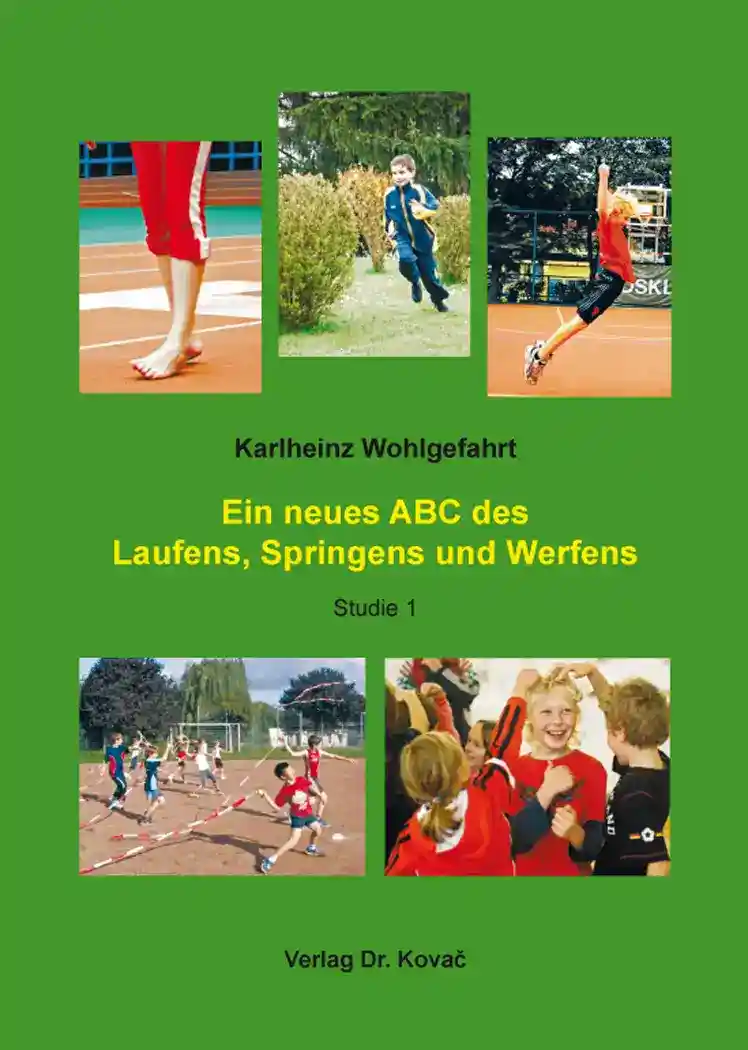Karlheinz WohlgefahrtEin neues ABC des Laufens, Springens und Werfens
Theoretische und empirische Studien zur Neugestaltung des Sportunterrichts in der Mittelstufe der Regelschule und eines grundlegenden leichtathletischen Anfängertrainings. Studie 1
Schriften zur Sportwissenschaft, volume 117
Hamburg 2014, 160 pages
ISBN 978-3-8300-7438-0 (print)
ISBN 978-3-339-07438-6 (eBook)
About this book deutschenglishfrançaisРусский
“Practice makes perfect sense only when it is performed intelligently” (cf. Stern 2011). This level is, according to our opinion, only attainable through a scientifically-based specialized teaching which “is taught both appropriately and suitably for schoolchildren, and above all systematically (cf. HUMMEL 2000).
As educational objectives play a leading role, student competencies (motor abilities, cognition, self and social interaction) are introduced briefly and illustrated with examples. Subsequently, they are applied to the learning content “Athletics ABC”. A new feature here is the link between student competencies and the “running, jumping and throwing experiences”. This leads to a new differentiation in movement, material, self and social experience as subcategories of educational objectives.
For each of these learning objectives a wide range of learning contents is structured and almost completely documented photographically. The aim of such documentation is the improvement of the educational experience through terminology, procedure, usability of exercises and equipment and situative arrangements. These provide the basis for a more informed approach to teaching, not only in the middle grades of “regular schools” (Regelschulen) and basic training in athletics (Grundlagentraining Leichtathletik), but throughout the educational system.
During our school pilot projects (2004–2011) we reorganized pre-existing instruction sections (IS) in grades 5 and 6 by introducing the above-mentioned experiences as topics during the first five to six lessons of an instruction section (IS 2: Jumping in the distance – also with a pole/5 weeks). To the teachers in our pilot schools, the previously unimaginable later proved to be a very empowering structural element.
In experience-based learning, learning is not “lectured”, but above all inspired, arranged, practiced, tried, lived-through etc. Empirical knowledge “gained from first-hand experience is a bridge between theoretical knowledge and practice which plays a big role in the correct understanding of theory in the practical usage” (cf. KOSING).
